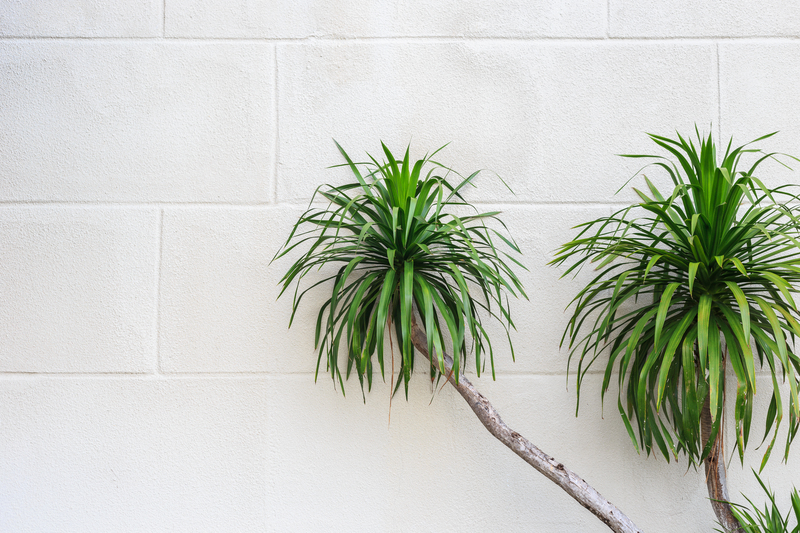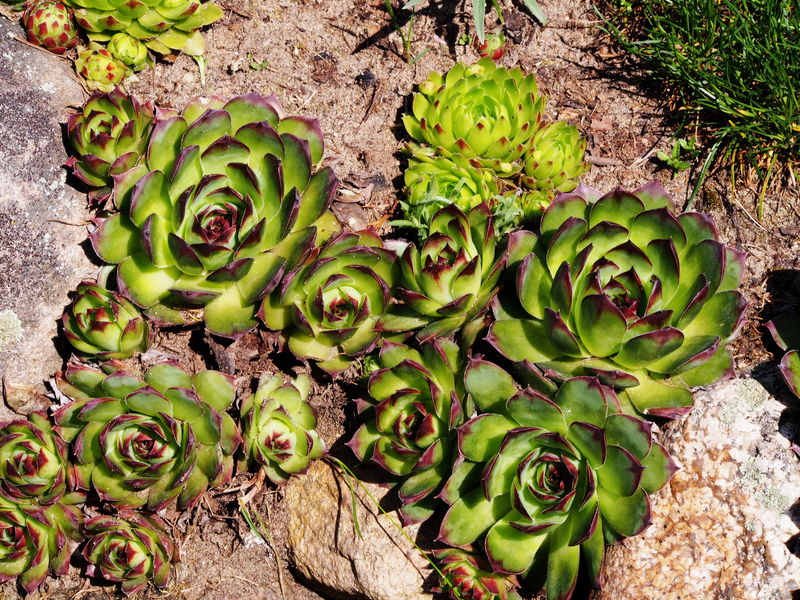DIY Tactics for Tackling Tree Stump Removal at Home
Removing a stubborn tree stump from your yard can seem like a daunting task, but with the right diy tree stump removal tactics, you can efficiently reclaim your outdoor space. Whether you're trying to landscape, plant a new tree, or simply improve your lawn's appearance, handling tree stump extraction yourself can save money and provide a sense of accomplishment. In this comprehensive guide, we'll outline the best strategies, tools, safety measures, and step-by-step instructions for effective tree stump removal at home.

Why Remove Tree Stumps?
Before diving into DIY stump removal methods, it's important to understand why getting rid of tree stumps is crucial:
- Pest Prevention: Dead stumps attract termites, ants, beetles, and other insects that may invade your home.
- Safety: Stumps can be trip hazards, particularly for children and pets playing in your yard.
- Property Value: Unsightly stumps can diminish the beauty and value of your landscape.
- New Growth: Stumps can sprout new shoots, causing unwanted saplings to grow in your yard.
- Disease Control: Decaying stumps may harbor fungal diseases that can spread to healthy trees.
For these reasons, homeowners often seek DIY methods for tree stump extraction to maintain a safe and attractive yard.
Assessing Your Tree Stump
Before selecting your DIY stump removal strategy, assess the following stump characteristics:
- Size: Larger stumps can be more challenging and may require power tools or multiple removal methods.
- Type of Tree: Hardwoods (like oak) decompose slower than softwoods (like pine), affecting removal difficulty.
- Stump Age: Fresh stumps are easier to remove physically, while older, decayed stumps may be removed chemically or burned more easily.
- Location: Consider proximity to buildings, utility lines, and landscaping features.
Manual DIY Tree Stump Removal Methods
The Digging Out Technique
If you prefer a chemical-free tree stump removal solution and the stump is small-to-medium in size, digging it out by hand can be rewarding. Here's how:
- Gather Your Tools:
- Spade or shovel
- Mattock or pickaxe
- Hand saw or reciprocating saw
- Loppers or pruning shears
- Sturdy gloves and protective eyewear
- Expose the Roots: Use the spade to dig around the stump, clearing soil and exposing the roots as much as possible.
- Cut the Roots: Sever large roots with your saw, while smaller roots can be cut with loppers or shears.
- Loosen the Stump: Wiggle and lever the stump with your mattock. Remove additional soil as needed to expose hidden roots.
- Pull Out the Stump: Once the roots are cut and loosened, lift the stump out. You may need extra hands or a pry bar for leverage.
- Backfill the Hole: Refill the hole with soil and tamp it down firmly to prevent settling.
Tip: Watering the soil a day before you start can soften it, making digging easier.
The Winch and Leverage Technique
For larger or deeply rooted stumps, try using a chain-and-winch setup:
- Dig and Expose Major Roots: Use the method above to uncover and sever as many roots as possible.
- Wrap the Stump With a Sturdy Chain: Place the chain securely around the base.
- Attach the Chain to a Winch or Come-Along: Secure the other end to a sturdy anchor (such as a large tree or vehicle rated for towing).
- Crank the Winch: Slowly apply pressure while wiggling the stump to loosen remaining roots.
- Remove Stump: Once free, drag or lift the stump out of the hole.
Caution: Never attach the chain to a small or unstable anchor, and always use proper safety equipment.
Chemical DIY Stump Removal Solutions
For stumps that are too difficult to remove manually, chemical decomposition methods offer a relatively easy and low-effort alternative for home-based tree stump removal.
Using Commercial Stump Removers
- Stump removal products contain potassium nitrate or other agents that accelerate decay of wood.
- Drill multiple holes in the top and sides of the stump -- the more, the better for faster results.
- Pour the chemical granules into each hole, then add water as directed by the product instructions.
- Cover the stump with a tarp to retain moisture and prevent rain from diluting the chemicals.
- Wait 4-6 weeks or longer; the stump will slowly soften and can then be broken up with an axe or shovel.
DIY Chemical Methods
If you prefer a natural stump rotting technique, accelerate decomposition using everyday products:
- Fertilizer: High-nitrogen fertilizers encourage bacterial activity and speed up decay.
- Epsom Salt: Drill holes as described above and pack them with Epsom salt, then add water. This draws moisture out and kills the stump slowly.
Pro Tip: After treating with chemicals or salt, keep the stump covered, damp, and topped with soil to maintain ideal decomposition conditions.
Burning as a Stump Removal Option
For those permitted by local regulations, burning can be an efficient method of DIY tree stump destruction:
- Check Burn Laws: Always verify with your fire department that burning stumps is allowed in your area.
- Prepare the Stump: Drill holes into the stump and fill them with kerosene (do not use gasoline). Allow it to soak for several days.
- Ignite Safely: Surround the area with bricks or stones to contain the fire, then ignite the stump. Supervise the burn at all times.
- Dispose of Ashes: After the burn, remove remaining ash and roots, fill, and tamp down the hole.
Caution: This method can be hazardous -- never leave the fire unattended and keep water or extinguishers nearby.
Mechanical Removal: Renting a Stump Grinder
For quick and efficient stump removal at home, renting a stump grinder delivers professional-level results:
- Rent the Right Grinder: Home improvement stores offer grinders for small-to-medium stumps. Also rent safety gear: goggles, gloves, and ear protection.
- Clear the Area: Remove rocks and debris around the stump.
- Grind the Stump: Position the grinder as instructed, then slowly lower the spinning blade just above the stump. Grind side-to-side, lowering progressively until 3-6 inches below ground level.
- Fill the Hole: Use wood chips and soil to cover the area.
Important: Stump grinders are powerful tools. Always follow manufacturer instructions and wear protective equipment.
Eco-Friendly and Slow DIY Options
If you're not in a rush for tree stump elimination, natural methods work over months or even years:
- Smothering: Cover the stump with a heavy tarp and mulch to starve it of oxygen and hasten slow decay.
- Composting: Add nitrogen-rich materials around the stump to encourage microbial breakdown.
Note: These methods require patience but are safe and environmentally friendly.
Common Mistakes and Safety Tips
- Skipping Safety Gear: Always wear gloves, goggles, sturdy boots, and long sleeves for all removal methods.
- Underestimating Labor: Stump removal can be physically demanding -- don't hesitate to ask for help.
- Ignoring Underground Hazards: Call local utility services to mark any underground lines before digging or grinding.
- Improper Disposal: Plan ahead to responsibly dispose of wood chips, roots, and debris.
- Illegal Burns: Never burn a stump without understanding local laws.
Tips for Tree Stump Removal Success
- Choose the Best Method: Match your stump size, type, and available tools to the most practical method.
- Work Patiently: Stump extraction is a process, especially for larger or deep-rooted trees.
- Enlist Help: Stump removal is often easier with two or more people.
- Protect Your Lawn: Place boards or tarps to minimize lawn damage from digging or grinding.

Frequently Asked Questions About DIY Stump Removal
How long does it take to remove a stump?
Manual removal usually takes a few hours for small stumps, while chemical methods can take several weeks. Burning and grinding are typically the quickest (under a day), but require special equipment and safety measures.
Can I plant a new tree where the stump was?
Yes -- but be sure to remove all the roots and fully backfill the hole with fresh soil. Wait a few months for the ground to settle before planting.
Are chemical or grinding methods better?
Grinding is faster but more expensive, while chemical methods are affordable but require patience. Assess your priorities before choosing.
Will Epsom salt kill a tree stump?
Yes -- Epsom salt dehydrates the wood and inhibits sprouting, promoting decay. It is a slow but natural method.
Conclusion: Take Control with DIY Tree Stump Removal
With the right techniques, eliminating unwanted tree stumps is a manageable diy home project. Whether you prefer digging, chemical, mechanical, or natural approaches, always prioritize safety and proper disposal. Remember that each tree stump removal tactic has its pros and cons -- assess your situation, equip yourself with the necessary tools, and work methodically for best results.
By following this guide, you can enjoy a stump-free, attractive yard, protect your home from pests and disease, and reclaim valuable outdoor space. For persistent or hazardous stumps, don't hesitate to seek professional assistance.
Share Your Success!
Have you tried DIY stump removal at home? Share your experience or tips in the comments below and help other homeowners achieve beautiful, safe yards!